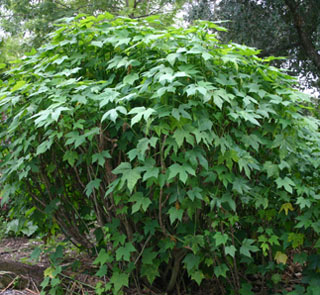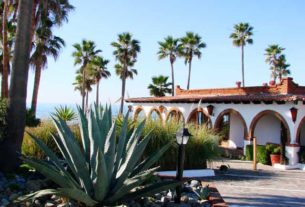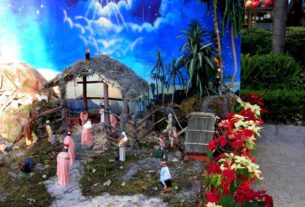by
Chaya Recipes and more
“Here is a contribution of the unforgettable Maya Indians, whom we have abandoned,” is the wistful introduction to a pamphlet on the chaya plant, from Desarollo Integral de la Familia (DIF), which goes on to call chaya “an ideal food and medicine.”
According to the National Institute of Nutrition in Mexico City, ingesting chaya will:
- Improve blood circulation,
- help digestion,
- improve vision,
- disinflame veins and hemorrhoids,
- help lower cholesterol,
- help reduce weight,
- prevent coughs,
- augment calcium in the bones,
- decongest and disinfect the lungs,
- prevent anemia by replacing iron in the blood,
- improve memory and brain function and
- combat arthritis and diabetes.
A nutritional analysis (see chart) shows that chaya is richer in iron than spinach, and a powerful source of potassium and calcium.

It’s also incredibly easy to grow and an attractive addition to the garden with its maple-like leaves and tidy growth pattern. It limits itself to about six feet in height. Plant a row close together and you’ll soon have a hedge. The plants tend to be open toward the bottom, so you can create a border with low- and medium-growing herbs.
Despite the near-miraculous claims for it, I’ve run into very few Mexicans who are familiar with chaya, and have never seen it in the market. To grow your own, stake branches of about 40 centimeters in sandy soil with good drainage, and water regularly. It grows well in a median annual temperature of 25 C. or higher, and at altitudes of 0 to 1000 meters above sea level.
In some states it is called chaya col or chaya mansa. The botanical name is Cnidoscolus chayamansa.
Start harvesting as soon as you see a couple of new leaves sprouted. Cutting encourages new growth, and the branches are pretty in flower arrangements. There’s so much of it around our place that we’re rather profligate with it, and it always rewards us with rapid new growth. Except for an occasional raid by cutter ants, we’ve found it pest-free.
The leaves are pretty bland, so you can add them to soups, casseroles, spaghetti sauces, salsas and salads without affecting the taste. The tiny, tender ones can go in omelets or salads or be used as garnish. The larger ones are best chopped and cooked long and slow. I’ve tried cooking them quickly, like spinach, and have not been happy with the leathery results.
For a liter of tea, use 3-5 medium size leaves with whatever blend you favor. I like two bags of black tea with two bags of mint and the chaya leaves, “cooked” in a glass bottle in the sun for a couple of hours and then refrigerated. Soak the leaves in water with a disinfectant such as Microdyn, before using, as you do fruits and vegetables.
Warning: In cooking or serving, Do not use aluminum containers, as a toxic reaction can result, causing diarrhea.
Use pottery or glass.
Here’s a nutritional comparison, supplied by the Mexican National Institute of Nutrition, and distributed by DIF.
Percentages are based on minimum daily requirements.
| % | Chaya | Alfalafa | Spinach |
| Protein | 8.25 | 3.66 | 2.00 |
| Crude fibre | 1.94 | 3.12 | 2.07 |
| Carbohydrates | 7.23 | 4.84 | 0.19 |
| Calcium | 421.00 | 12.00 | 49.00 |
| Phosphorus | 63.00 | 15.00 | 30.00 |
| Iron | 11.61 | 5.30 | 5.70 |
| Vitamin A | 8.52 | 0.74 | 2.48 |
| Vitamin B1 | 0.23 | 0.13 | 0.03 |
| Ascorbic Acid | 0.35 | 0.14 | 0.10 |
| 274.00 | 130.00 | 17.50 |
Chaya Supplement
Since the article on chaya (Cnidoscolus chayamansa) was published, we’ve had numerous requests from the United States on where to buy plants or seed, or how to have it sent from Mexico. We can’t send from Mexico — plants and seeds are restricted items. Here’s what we’ve found out.
Reader Mary Matthews, informs us that chaya cuttings are available on a limited basis from ECHO in North Fort Myers, Florida, from Neem Tree Farms in Brandon, Florida, and also from Steve Janosko in Connecticutt.
Although it’s common practice in Mexico to use the leaves raw in agua fresca, a tea-like cold drink, chaya does contain cyanogenic glycosides, which are a source of cyanide poisoning, so it should not be eaten raw. Boiling leaves for at least 5 minutes releases the cyanide and makes the leaves safe to eat. We caution you to be sure you’re getting Cnidoscolus chayamansa — there may well be other varieties.
Those who live in areas with Spanish-speaking populations might try grocery stores or nurseries in Latino neighborhoods. If you don’t speak Spanish, what you say is: ”¿Sabe Usted en dónde puedo comprar semillas o plantitas de chaya?” (Do you know where I can buy seeds or small plants of chaya?) If you get a positive answer, ask them to write it down. (”Por favor, escríbelo.”)
by . Updated October 2009



My Vietnamese wife and I consume the Chaya leaves on a daily basis. She fixes different dishes with the leaf. I have free cuttings for anyone interested. I live in Freeport, TX.
Hello, Thank you for posting abt Chaya. I would love to grow the Chaya plant at my farm in Dallas. Could you kindly advise me if I may come and buy the seeds or free cuttings to grow. I’m trying to regulate My pre diabetic father. My email is [email protected]. Thank you!
Can you please tell me how I can contact you directly to get a cutting. I’m in California, but can pay you for shipping it to me via PayPal or Venmo.
Hello George,
I would be very grateful if I could get some cuttings of Chaya. We have not been lucky to find it around here.
Would you mind letting me know if this is still possible?
Thank you so much for being willing to share this treasure with us!
Hi there,
I would love some cuttings. Please tell me how I can pay you for shipping. I live in Florida and would love about 10 cuttings if possible.
We have the plant if you are interested reply to this number 3059893561
Hi George,
Please let me know if you have any more Chaya cuttings as I would love yo try this plant out in my garden.
Meshell
[email protected]
Hola ,estoy interesado en la planta Chaya
Y me gustaría saber cómo conseguirla
Vivo en Lewisville tx
Hi George. I would love to have some cuttings and would be happy to pay. I am in NC.
Hello I was wondering if you still have cuttings available I live in California but can pay for shipping through paypal or venmo. please email me at [email protected]
I love Chaya and grow it in Florida. I would love some of your recipes. Thank you [email protected]
Hello Sir,
I am interested in this plant. Please how can i get it? I heard about it from my mother inlaw in Africa and since then been searching for it.
HI!,
I live in Lanzarote in Spain, and I would love to get some seeds.
I saw you only have cuttings, but you must have seeds too – Would it be possible to send me some? I will pay transport of course.
My email is [email protected].
Thank you
We have some cuttings .. Houston Texas
Gmail:edibleurbanoasis
Or contact us at Facebook.com/edibleurbanoasis
Or Facebook.com/houstonhugelkur
I would love to try growing a cutting of this.
I’m drinking a glass os Chaya and aqua de lemon right now in Oaxaca… delicious (sugar free)
I am growing plants from cuttings and they are super easy to maintain. Can share with anyone wanting some. South Florida.
we found your article online and it is very informative and well written. We recently returned from a visit to north-central Yucatan, in the Puuc Archeological Zone, and found chaya served as a drink in many local restaurants. apparently it is widely grown in gardens in the Yucatan, and sold in marketplaces. However we had no success with locating seeds. Do you have any new sources for seed?